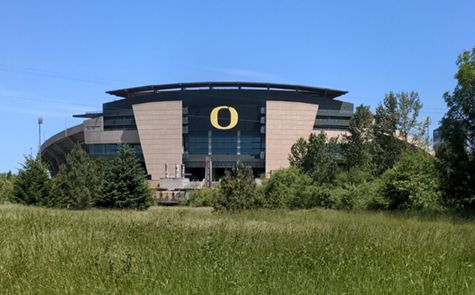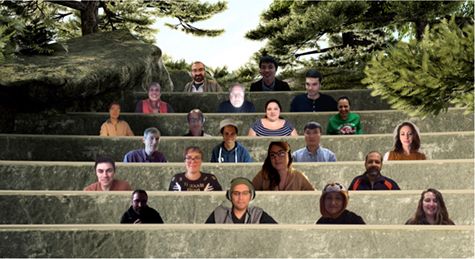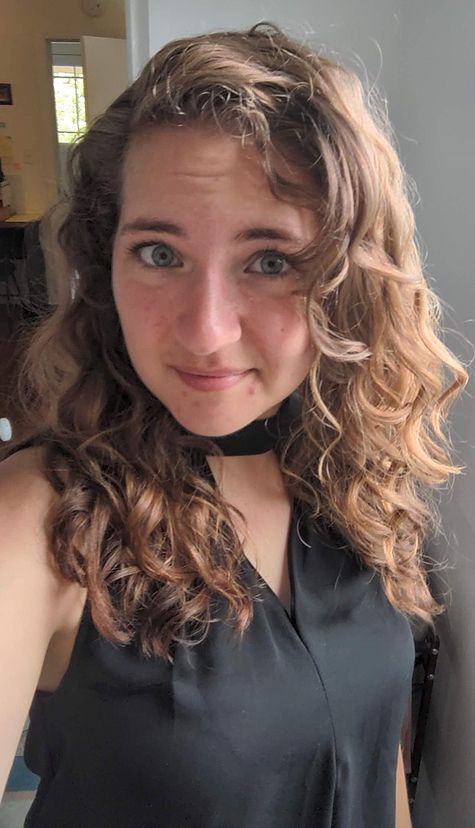Early Career Scientist Spotlight
Dr. Amanda Steinhebel (she/her/hers)
High-energy Astrophysicist
Astroparticle Physics Laboratory (661)
How did you end up working at NASA Goddard?
In 2021, I earned my PhD in high energy (particle) physics after working with the ATLAS detector at CERN and studying the Higgs boson. As I approached the end of my PhD and began thinking about future steps, a lot of dichotomies within high energy physics became clear to me. For example, I cherished being a member of an international collaboration that gave me the opportunity to meet many experts in many different fields of study from many different places in the world and career stages. However, being one graduate student in a collaboration of more than 3,000 scientists was daunting, and I often felt lost. My particle physics network connected me to members of their network who had left the field, and one of these connections is my current boss at Goddard. Since we have the same background, she understands how I think about problems (very different from an astronomer!) and the type of training that I received at CERN.

Credit: Amanda Steinhebel
What inspired you to pursue a career in astrophysics?
As I mentioned, I knew I wanted to leave high energy physics, but I didn’t have a set path in mind at first. What I did know from particle physics is that I was especially fascinated by particle detectors and how they can reliably provide quality scientific data for analysis. I only looked at postdoc positions that valued this hardware aspect, and intentionally tried to build my skill set in this direction. Following my interest in detectors led me to astrophysics! It turns out a gamma-ray telescope and a particle detector at the LHC are not so different after all.
What science questions do you investigate?
My main focus is developing silicon technology for use in future gamma-ray telescope missions such as the All-sky Medium-Energy Gamma-ray Observatory eXplorer (AMEGO-X). This novel pixelated tracker is called AstroPix. A lot of groundbreaking science can be done with the MeV gamma rays that a future medium-energy gamma ray telescope would measure. The science questions that are the most interesting for me to think about are reflective of my particle physics background – potential signs of new physics beyond the Standard Model. I am also working on a search for dark matter and have some ideas about other specific dark matter candidates such as axion-like particles and right-handed neutrinos as well.

Credit: Henrike Fleischhack
What skills are most useful to you in your work, and where did you develop those skills?
I think two of the most important skills for any scientist to have are the “soft skills” of creativity and communication. Problems simply can’t be solved if everyone on the team thinks the same way about them. A creative solution can help lead the team in a new, exciting direction. This attribute has gotten me over a few roadblocks in the lab already. Communication is imperative for problem-solving (for productive sharing of knowledge) and also of course for effectively sharing results. I got a head-start developing these skills in my undergraduate environment. I went to a small liberal arts school with no graduate program and only about 2,000 students. Departments were small and close-knit, and I felt very supported as a scientist and as a human there. Less groundbreaking research was happening there compared to large research-driven schools, but the community I built there and the liberal arts emphasis on communication and flexibility have helped me just as much as a scientist.

Credit: Tyler Parsotan
What is one of your favorite moments in your career so far?
My career has been varied, but I already have a favorite moment of the astroparticle aspect of it from just a few months ago! In March I was selected to present a talk on AstroPix at the American Astronomical Society (AAS) High Energy Astrophysics Division (HEAD) meeting, and this was exciting for so many reasons. This was my first astrophysics conference, and my (and many others’) first in-person conference for two years! I was intimidated by the quality of the talks all week leading up to my own, but my talk went well, and the audience asked really interesting questions. The stand-out moment for me was at the end of the session where colleagues in my new field pulled me aside to continue discussing AstroPix after the talk. It really felt like I was an expert in this material, and that I was being accepted into this new community.
What is a fun fact about you?
I am a member of the Symphony Orchestra of Northern Virginia (SONOVA). I used to play the clarinet and saxophone in high school and college, but had to drop the hobby as my studies got more serious, and as I moved to different countries in graduate school (to CERN). Being back in a large musical ensemble has been amazing and healing for me. Keep an eye out for our fall schedule this year and please consider attending a concert!! Community orchestras are such beautiful gems in our communities and, after the pandemic, the arts are especially struggling to survive.

Credit: Linda Steinhebel
What are your future research interests and goals?
The more involved with hardware I become, the more fascinated I am by the work. I intend to keep my career aligned along this track and learn as much as I can about different detection techniques and readout systems. I would love to make a leading contribution to a piece of technology that ends up flying. So far in my career, I have followed my interests and allowed opportunity to knock, so I plan on continuing with this philosophy and seeing where it takes me!
Biography
Home Town:
North Canton, Ohio
Undergraduate Degree:
B.A. in Physics and Mathematics; College of Wooster; Wooster, OH
Post-graduate Degrees:
M.S. and PhD in Physics; University of Oregon; Eugene, OR

Link to Dr. Steinhebel's GSFC Bio
